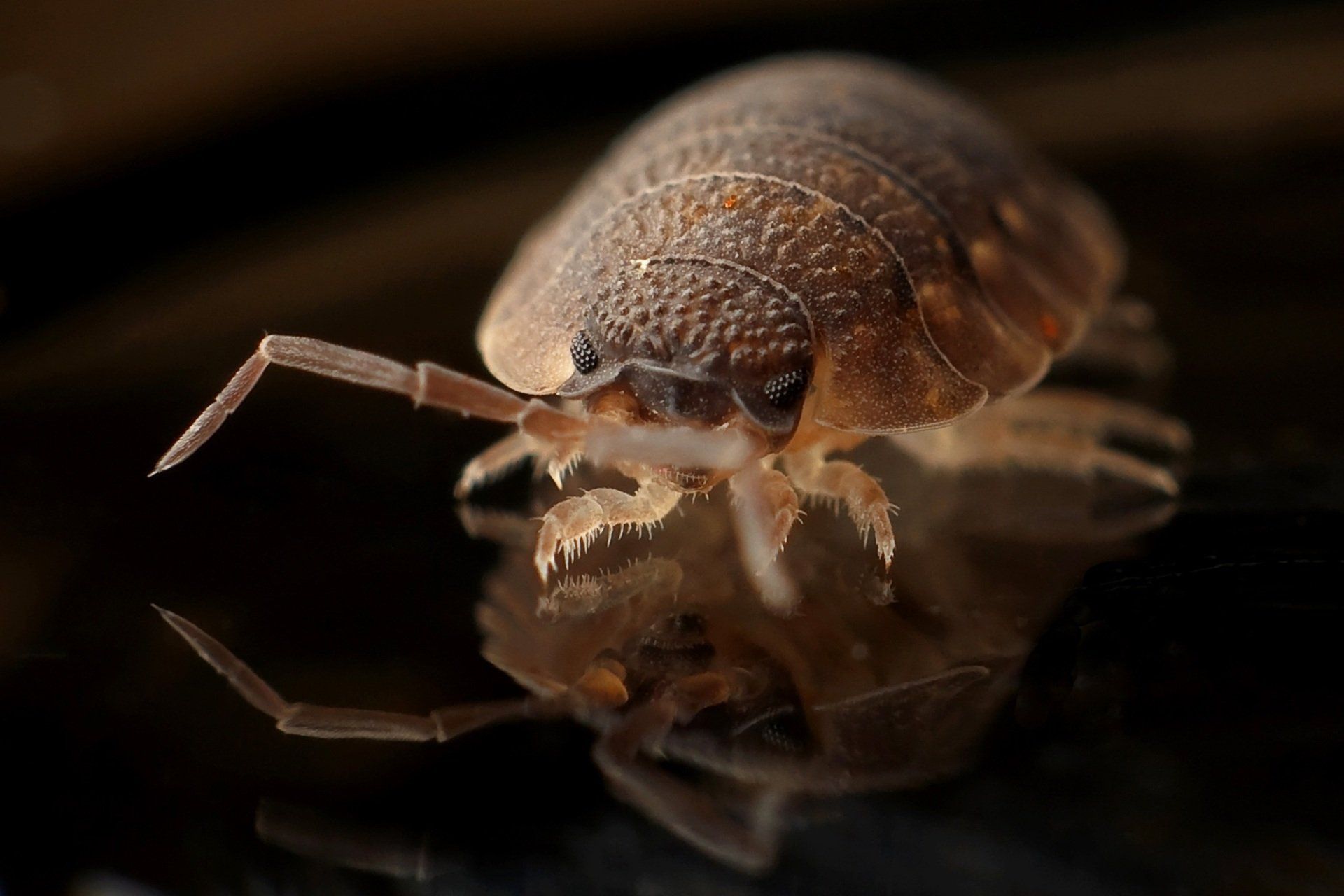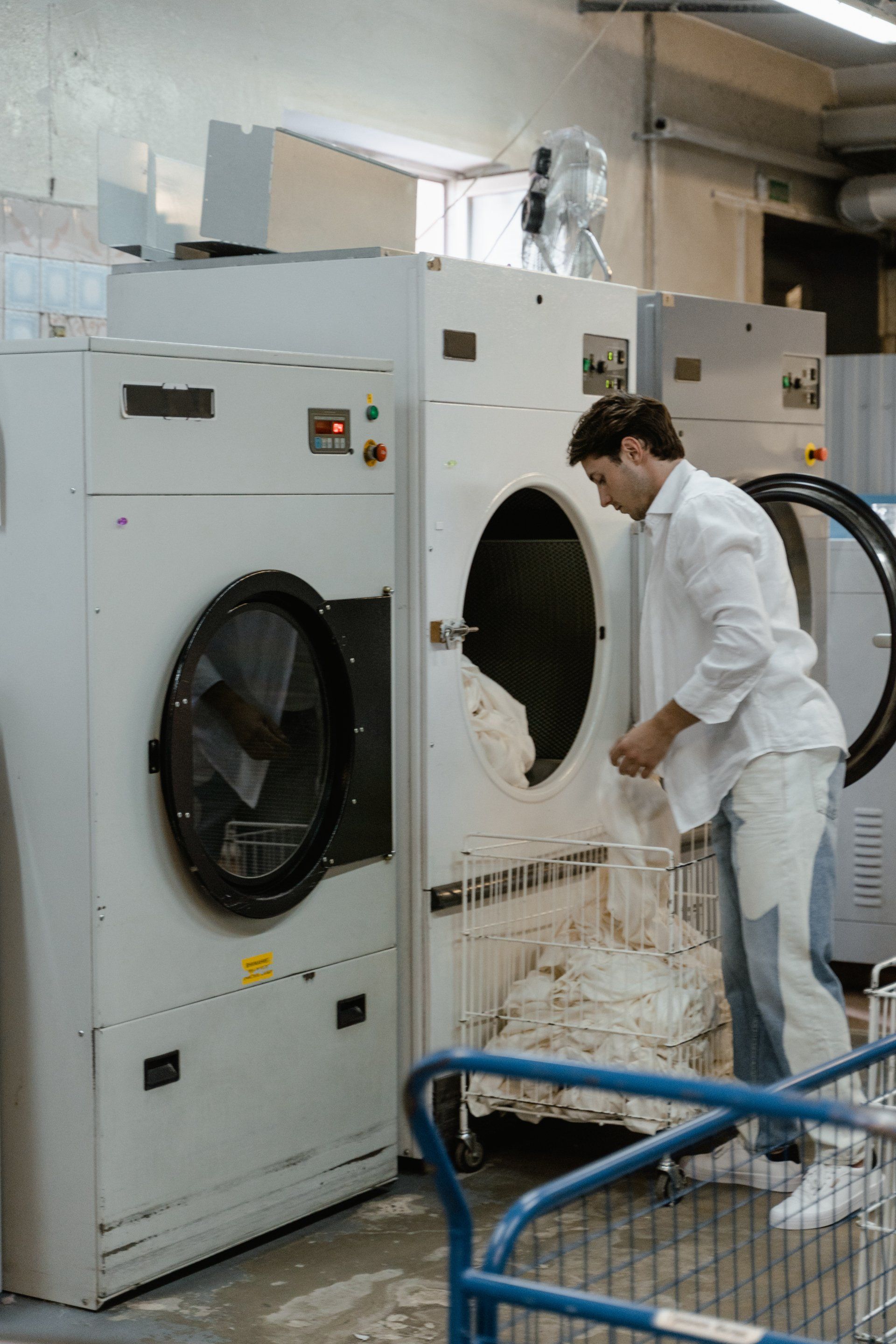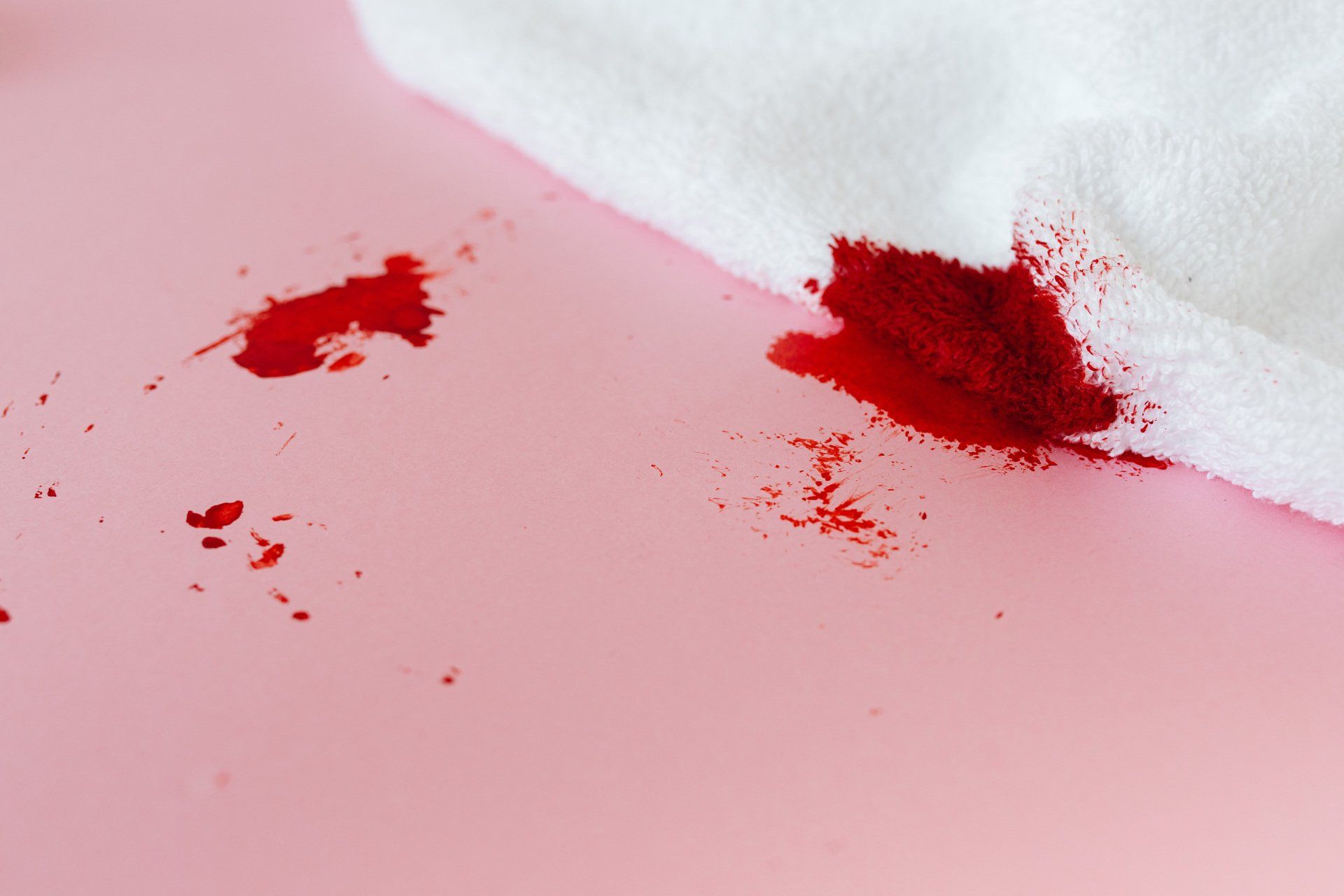Does dry cleaning kill bed bugs?

Key Takeaways:
- Dry cleaning is an effective method to kill bed bugs: Dry cleaning can effectively eliminate bed bugs and their adult stages. The high temperatures and chemicals used in the process can help eradicate infestations.
- Dry cleaning may not eliminate bed bug eggs: While dry cleaning is effective against adult bed bugs, it may not completely eliminate bed bug eggs. Follow-up treatments or alternative methods may be necessary.
- Alternative methods can be used to eliminate bed bugs: Heat treatment, cold treatment, and insecticides are alternative methods that can be used to eliminate bed bugs. These methods can complement or be used instead of dry cleaning.
Does Dry Cleaning Kill Bed Bugs?
In the battle against bed bugs, one common question that arises is whether dry cleaning can effectively eliminate these pesky pests.
Bed bugs are small, nocturnal insects that feed on the blood of humans and animals. They can infest homes, hotels, and other areas where people sleep or spend extended periods. Detecting a bed bug infestation is crucial to take prompt action.
Dry cleaning is a popular method for cleaning clothes and other fabrics that cannot be washed using traditional methods. It involves the use of solvents to remove dirt and stains. But does dry cleaning have the power to kill bed bugs?
This is a frequently asked question by individuals who are dealing with a bed bug infestation. Let's explore the important facts to consider:
- Dry cleaning utilises high temperatures that can successfully kill bed bugs as well as their eggs.
- The solvents used in dry cleaning have the ability to deeply penetrate fabrics, effectively eliminating bed bugs that may be hiding in seams and folds.
- It is highly recommended to seek the expertise of professionals who are experienced in handling items infested with bed bugs for dry cleaning.
- It is important to note that dry cleaning alone may not completely eradicate infestations in areas such as mattresses, furniture, or carpets.
Understanding Bed Bugs
Bed bugs are small, parasitic insects that feed on human blood during the night. Understanding bed bugs is essential in order to effectively eradicate them from households. Here are some significant points to consider:
- Identification: Bed bugs are reddish-brown and roughly the size of an apple seed. They have a flat, oval-shaped body and can be seen with the naked eye.
- Behaviour: Bed bugs hide in cracks, crevices, and furniture during the day. They are attracted to warmth and carbon dioxide, which is why they are often found in beds, mattresses, and sofas.
- Bites: Bed bug bites can cause red, itchy welts on the skin. Not everyone reacts to these bites, making it difficult to identify an infestation based solely on bites.
- Infestation: Bed bugs reproduce quickly, and infestations can spread rapidly. If you suspect an infestation in your home, take immediate action.
- Eradication: Getting rid of bed bugs can be challenging and may require professional help. Vacuuming and washing bedding at high temperatures can help control the infestation.
What are bed bugs?
Bed bugs are small insects that derive nourishment from human blood and can often be found in and around beds. They may also reside in furniture, wardrobes, and the area behind wallpaper.
Bed bugs are attracted to warmth and the carbon dioxide exhaled by humans. They are approximately the size of an apple seed and have a reddish-brown colouration.
To identify a bed bug infestation, one should be vigilant for indicators such as small bloodstains or dark spots on bedding or mattresses, as well as discarded bed bug exoskeletons. Bed bug bites typically appear as small, itchy red welts on the skin.
Addressing a bed bug infestation promptly is crucial as they have the ability to reproduce rapidly. Methods for eliminating bed bugs include heat treatment, cold treatment, and the application of insecticides. Adopting preventive measures, such as regular inspections for signs of bed bugs in the home and maintaining a clean and clutter-free living environment, can help reduce the risk of an infestation.
What are the signs of a bed bug infestation?
Bed bugs can prove to be a nuisance, hence it is imperative to be conscious of the signs of a bed bug infestation and take immediate action. What are the signs of a bed bug infestation? Some common indications include the following:
- Bite marks: Bed bugs are nocturnal pests that feed on human blood. Their bites appear as itchy, red welts in a line or cluster on exposed skin.
- Bloodstains on bedding: Small bloodstains on bed sheets and pillowcases may suggest that bed bugs have fed during the night.
- Dark spots on bedding or furniture: Bed bugs leave behind dark faecal stains, resembling tiny black or brown dots, on sheets, mattresses, or furniture upholstery.
- Musty odour: Bed bugs emit a pungent, musty odor. If you detect an unpleasant smell in your bedroom or on your bedding, it could be an indication of a bed bug infestation.
- Visible bed bugs or eggs: Adult bed bugs are small oval-shaped insects, approximately the size of an apple seed, and can be found hiding in mattress seams, furniture cracks, or behind wallpaper. Bed bug eggs are minuscule and translucent, also found in these areas.
Keep in mind that bed bugs are skilled at concealing themselves, which makes it imperative to thoroughly inspect your living space if you suspect a bed bug infestation. If you discover signs of bed bugs, it is advisable to seek professional pest control assistance for effective eradication.
Understanding the dry cleaning process
To understand the effectiveness of dry cleaning against bed bugs, it is essential to first grasp the process of dry cleaning itself. Dry cleaning relies on the use of chemicals and heat to sanitise and clean clothes. The process usually involves the following steps: garment inspection, stain removal, dry cleaning machine cleaning, finishing, and inspection.
While dry cleaning can effectively remove dirt and stains from clothes, its ability to eliminate bed bugs is questionable. Bed bugs are resilient creatures that can survive extreme temperatures and chemicals. While dry cleaning may kill some bed bugs on contact, it is not a foolproof method to completely eradicate an infestation.
How does dry cleaning work?
Dry cleaning is a method used to clean clothes and fabrics without the use of water. The process involves the use of a solvent called perchloroethylene to remove dirt and stains.
Before the actual cleaning process starts, visible stains are treated beforehand. The clothes are then placed inside a machine that is similar to a regular washing machine. Inside this machine, the clothes are rotated and tumbled while the solvent is sprayed onto them. The solvent effectively dissolves both dirt and stains, effectively separating them from the material.
Once the cleaning cycle is complete, the solvent is drained, filtered, and then reused. The clothes are placed on a dryer cycle with the same machine to completely remove any remaining solvent.
Can bed bugs survive dry cleaning?
Bed bugs cannot survive the dry cleaning process.
Clothing and bed linens are exposed to high temperatures of approximately 140°F (60°C) for a specific amount of time during this process. These temperatures are deadly to bed bugs at every stage of their life cycle, including eggs, young bed bugs, and mature adults.
Dry cleaning chemicals like perchloroethylene are also effective in killing bed bugs as they are toxic to insects. The combination of heat and chemicals guarantees complete elimination of bed bugs from fabrics.
It is important to note that not all items can be dry cleaned, so it's crucial to check the care instructions or consult with a professional dry cleaner.
Interesting fact: Bed bugs are resilient pests that can survive in extreme conditions, such as extreme cold temperatures and long periods without food, for several months. They are highly vulnerable to heat and cannot tolerate temperatures above 113°F (45°C) for an extended period.
Does dry cleaning kill bed bug eggs?
It has been observed that bed bug eggs are resistant to many common methods of pest control, including dry cleaning. These eggs are typically laid in concealed areas such as cracks and crevices, making it challenging for dry cleaning solvents to penetrate and exterminate them.
Although the high heat utilised in the dry cleaning process might be able to eliminate some bed bug eggs, there is no guarantee that it will eradicate the entire population. On the other hand, heat treatment proves to be a more effective method for eliminating bed bug eggs. This treatment involves raising the temperature of the infested area to a level that can prove lethal for the eggs. If you suspect a bed bug infestation, it is crucial to promptly contact a professional pest control company to accurately assess and treat the issue.
Even though dry cleaning can assist in removing adult bed bugs and their droppings from clothing and fabrics, it is not a reliable solution for eradicating bed bug eggs. To effectively eliminate these eggs, it is recommended to resort to heat treatment or other professional methods.
Alternative methods to eliminate bed bugs
Looking for alternative methods to eliminate bed bugs? In this section, we'll explore three powerful approaches: heat treatment, cold treatment, and insecticides. Discover the effectiveness of each method and find out the best options to tackle these pesky intruders. Say goodbye to sleepless nights and the worry of bed bug infestations as we delve into the world of innovative and potent solutions for a bug-free home.
Heat Treatment
Heat treatment, a process designed to eliminate bed bugs, involves increasing the temperature of the infested area to a level that is lethal to both the bugs and their eggs. In order to achieve this, professionals utilize specialized equipment to heat the infested areas. This effective method typically takes several hours to ensure that all bugs and eggs are exposed to the high temperature. The elevated temperature penetrates cracks and crevices where bed bugs often hide, effectively eradicating them.
One significant advantage of heat treatment is its lack of chemicals or insecticides, making it an environmentally friendly and safe option. Heat treatment is particularly effective against bed bug populations that have developed resistance to traditional insecticides.
It is essential to note that heat treatment should only be administered by professionals with the necessary expertise and equipment. Attempting to perform heat treatment on your own can be hazardous and may not yield the desired results.
Heat treatment has been utilized for centuries as a means of combating pests. Ancient civilizations and people in the 18th and 19th centuries relied on fire and heat to repel insects and eradicate bed bugs. With modern technology and advancements, heat treatment has become an extremely efficient and successful method for eliminating bed bugs.
Cold Treatment
Cold treatment is a highly effective technique for eliminating bed bugs. When exposed to freezing temperatures, both adult bed bugs and their eggs are unable to survive. The process involves placing infested items, such as bedding or clothing, in a freezer that is set at or below 0 degrees Celsius for multiple days. This extreme cold kills off the bed bugs and their eggs, ensuring complete extermination.
Cold treatment offers a convenient and chemical-free solution for getting rid of bed bugs. It is especially beneficial for delicate fabrics or electronics that cannot tolerate heat or insecticides. It may take longer to completely eradicate the infestation compared to other methods.
To ensure success, it is important to maintain consistently freezing temperatures throughout the entire process. Seal the infested items in airtight bags or containers to prevent reinfestation. Leave them in the freezer for at least four days to guarantee the complete elimination of all bed bugs and eggs.
Pro-tip: Prior to placing infested items in the freezer, make sure to remove any excess debris or clutter. This practice will enhance the effectiveness of the cold treatment and reduce the risk of bed bugs spreading to other areas.
Insecticides
Insecticides are able to effectively eradicate bed bugs. Here are key details about the application of insecticides for bed bug elimination:
- Insecticides have the ability to exterminate insects and are available in the form of sprays, powders, or liquids.
- Various types of insecticides can eradicate bed bugs, such as pyrethroids, neonicotinoids, and insect growth regulators.
- Insecticides disrupt the nervous system of bed bugs, leading to their demise.
- It is important to select an insecticide specifically labelled for bed bug control to ensure its effectiveness.
- When using insecticides, it is crucial to follow the instructions on the label diligently, which includes wearing protective clothing, ensuring proper ventilation, and using the appropriate amount.
- Multiple treatments might be necessary to completely eliminate all bed bugs and their eggs.
- Combining insecticide treatment with other methods like heat or cold treatment enhances its effectiveness.
- Regular monitoring and subsequent treatments might be required to guarantee complete eradication.
- Insecticides serve as a valuable tool in the fight against bed bugs. Adhere to the manufacturer's instructions to use them safely and effectively.
Preventive Measures
Learn how to keep those pesky bed bug infestations at bay. Discover effective strategies and practical tips to safeguard your home from these unwelcome pests. From proper cleaning techniques to identifying potential hiding spots, we've got you covered. Say goodbye to sleepless nights and hello to peace of mind with our tried and tested preventive measures. Don't let bed bugs take over – take control and protect your space.
How to Prevent Bed Bug Infestations
To prevent bed bug infestations, it is essential to know how to prevent them. By following these steps, you can significantly reduce the risk of a bed bug infestation in your home.
Regularly check your mattress and bedding for any signs of bed bugs, such as dark spots or bloodstains. Use bed bug-proof covers on your mattress and box spring to prevent bed bugs from getting in or out. Vacuum your bedroom regularly, paying special attention to areas around your bed, including cracks and crevices. Wash and dry your bedding (sheets, pillowcases, and blankets) at high temperatures to get rid of any bed bugs or eggs.
Keep your bedroom free of clutter, as it provides hiding places for bed bugs. When traveling, inspect hotel rooms for signs of bed bugs before unpacking. Keep your suitcases elevated and away from the bed. Make sure to avoid getting used furniture or mattresses without thoroughly inspecting them for bed bugs.
Stay vigilant for any signs of infestation, and take immediate action if you suspect the presence of bed bugs. Remember, early detection and prompt treatment are crucial in controlling and eradicating bed bugs from your living space.









